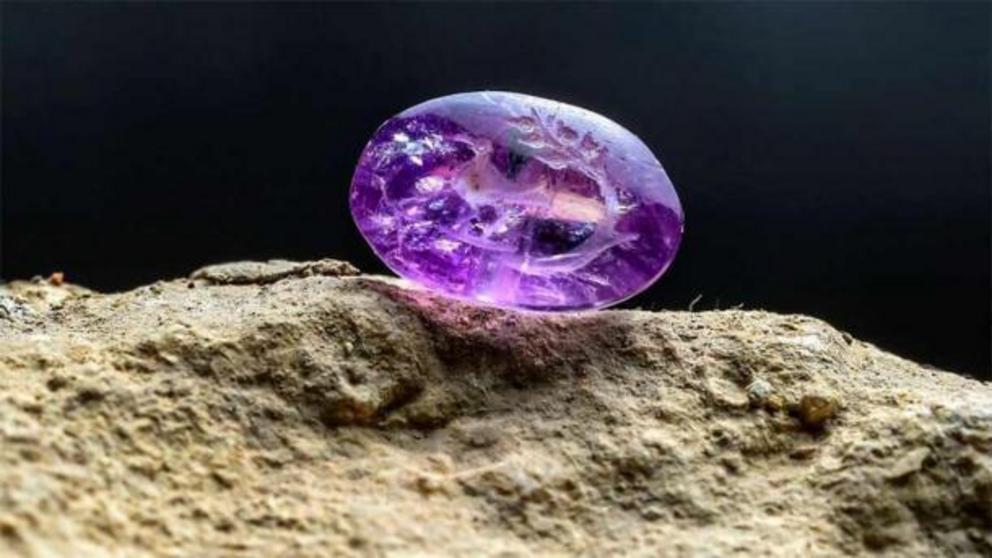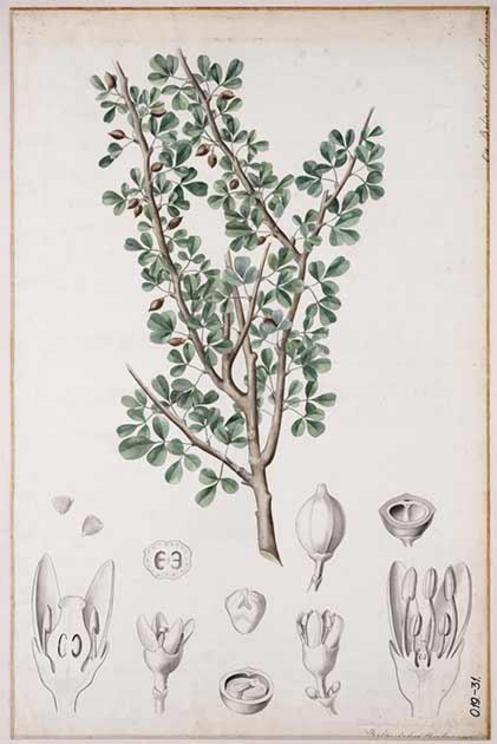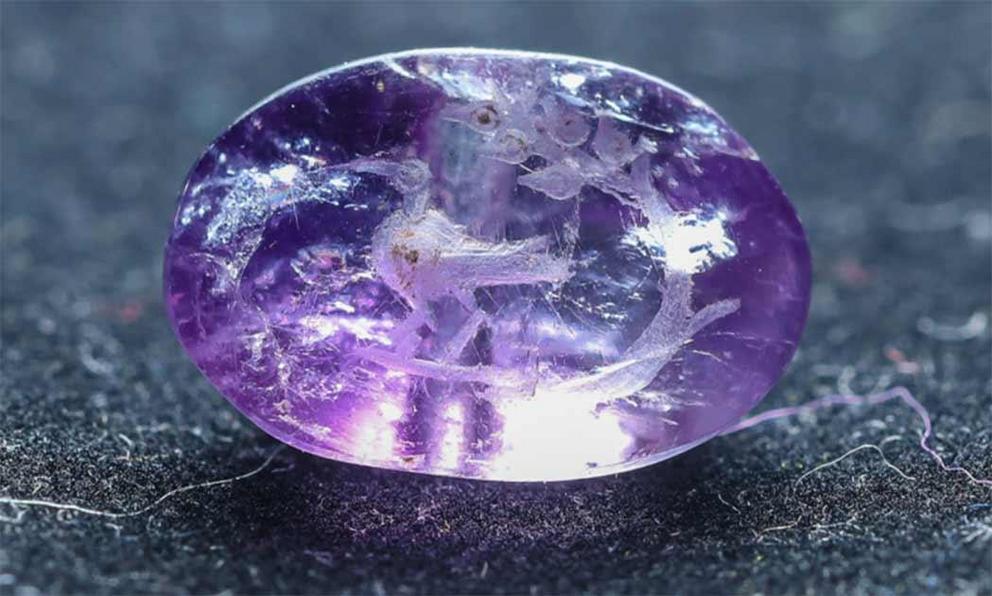Unique biblical ‘persimmon’ amethyst seal discovered in Jerusalem sewer
Top image: The amethyst seal found in a Jerusalem sewer may be the first artifact ever to depict the Biblical persimmon plant.
A rare lilac-colored amethyst seal has been discovered in an ancient sewer beneath Jerusalem. Depicting a bird holding a plant branch with five fruits with its feet, the engraved amethyst seal represents the very first depiction of Biblical persimmon, a prized plant used in Second Temple period incense (many scholars believe the Biblical persimmon plant to be Commiphora gileadensis , the Arabian balsam tree, a shrub).
The amethyst seal, which was used to mark possession and private communications, was found at the Emek Tzurim National Park on the lower western slope of the Mount of Olives and Mount Scopus and the upper reaches of the Kidron Valley. Israel Antiquities Authority (IAA) archaeologists were sifting through soil that had been excavated from the foundation stones of the Western Wall. The amethyst seal was found in soil from a drainage system that once connected the Pool of Siloam and the Temple Mount.
 The 2,000-year-old amethyst seal bearing an engraving that depicts a bird carrying the Balm of Gilead or Biblical persimmon plant.
The 2,000-year-old amethyst seal bearing an engraving that depicts a bird carrying the Balm of Gilead or Biblical persimmon plant.
The Amethyst Seal’s Persimmon Plant Was More Than Medicinal
The term “Pool of Siloam” refers to several rock-cut pools located outside the walls of the Old City to the southeast, which are believed to be the original site of the first settlement at Jerusalem. The artifact dates to the Second Temple period in Jewish history (516 BC-70 AD), at which time early Christianity emerged. The ancient seal was carved from a lump of clear lilac amethyst. And experts say the amethyst seal’s engraving likely depicts a bird carrying a Biblical persimmon plant. If so, this is the first time an artifact has been found showing the plant.
The persimmon plant depicted in the seal should not be confused with the blazing orange persimmon fruit that we eat today. Also known as the "Balm of Gilead,” the Biblical persimmon plant was used in the production of a rare medical perfume of that name, as is mentioned in the Bible. Furthermore, this particular plant was a key ingredient in the incenses offered within the Second Jerusalem Temple built by King Herod . During the Second Temple period all trade and production of the persimmon plant was controlled by Jews living in the Dead Sea basin.
According to the Times of Israel , IAA Archaeologist Eli Shukron said in a statement that this is a very important archaeological find. It might be the first time a seal has ever been discovered with an engraving of the precious Biblical flora . The researcher pointed out that the persimmon plant depicted on the seal reflects Biblical stories of King Solomon. Not only did the king gift the precious plant to the Queen of Sheba , but the ancient Jewish historian Flavius Josephus recorded Mark Antony giving Cleopatra persimmon orchards that had once belonged to King Herod.
 Many scholars believe this plant, Commiphora gileadensis, the Arabian balsam tree, a shrub, is the legendary Biblical persimmon plant, which was medicinal and used to make incense.
Many scholars believe this plant, Commiphora gileadensis, the Arabian balsam tree, a shrub, is the legendary Biblical persimmon plant, which was medicinal and used to make incense.
A Bespoke Ring For A Wealthy Jewish Persimmon Farmer?
An article in Haaretz quotes Professor Shua Amorai-Stark, the co-author of a soon to be published paper on the discovery, discussing the second image on the amethyst seal: an unknown bird. IAA archaeologist Prof. Amorai-Stark said that the bird is most probably either an ibis or a dove. Across the Hellenistic, Roman, and Jewish worlds, doves symbolized wealth, happiness, goodness, and success.
The bird depicted on the amethyst seal has a curved and pointed beak that most resembles that of an ibis, which the ancient Egyptians associated with their moon god Thoth , the patron of scribes and Egyptian sacred magical texts.
In conclusion, according to an article in the Jerusalem Post , Amorai-Stark said the owner of the ring was “likely a wealthy person.” He reminded readers that the plant was grown, prepared, and sold by Jews living in the Dead Sea basin, which is located less than 20 kilometers (12.5 miles) east of Jerusalem. This led the archaeologist to speculate that the ring’s wearer perhaps owned a persimmon orchard. He added that the owner “maybe brought a branch of persimmon so that the craftsman knew what to carve on the stone.
While many seal rings depicting plants, fruits and animals have been discovered dating from the Second Temple period, this stone seal is unlike any that has been discovered so far. The unknown species of bird depicted on the amethyst seal is probably an ibis, but it could also turn out to be a dove. However, the plant the bird is carrying is very likely Biblical persimmon, an image of which has never been found on any ancient artifact.

